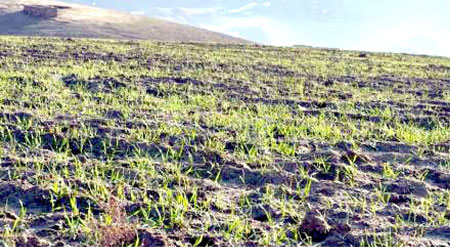The Ministry of Agriculture, Irrigation and Livestock said that the Afghan agriculture sector needs to be modernized in a bid to gain a good harvest.
The Food and Agriculture Organization (FAO) issued a humanitarian response plan for 2022 through which it will provide support to nine million people in Afghanistan. The FAO expressed concerns over the deteriorated situation of farmers in Afghanistan. The FAO plan will cost $197 million.
“Food security hinges on food production for Afghanistan’s predominately rural population, and agricultural livelihood systems are on the brink of collapse,” the FAO said in a report. “Emergency livelihood assistance must reach rural Afghans in time seasonally to prevent massive livestock deaths, lost harvests and the long-term destitution, displacement and humanitarian needs that inevitably follow. Enabling people to continue farming and livestock-herding is a key element of the ongoing humanitarian response.”
Meanwhile, the farmers in Faryab said that due to drought, the harvest has significantly decreased. “The farmers cultivated their harvest but due to lack of rain and water, the crops were very less,” said Obaidullah, a farmer. The Ministry of Agriculture, Irrigation and Livestock said that the Afghan agriculture sector needs to be modernized in a bid to gain a good harvest.
“The farmers don’t have access to a modernized system of agriculture,” said Musbahuddin Mustayin, a spokesman for the Ministry of Agriculture, Irrigation and Livestock. “The international community should support the Afghan agriculture sector so the problems of our farmers will be solved,” said Mirwais Hajizada, deputy head of Chamber of Agriculture and Livestock. The low rate of precipitation and drought has caused a significant reduction in agriculture across the country. Based on statistics of the Ministry of Agriculture, Irrigation and Livestock, Afghanistan needs to import three million tons of wheat to Afghanistan.—Tolo News








